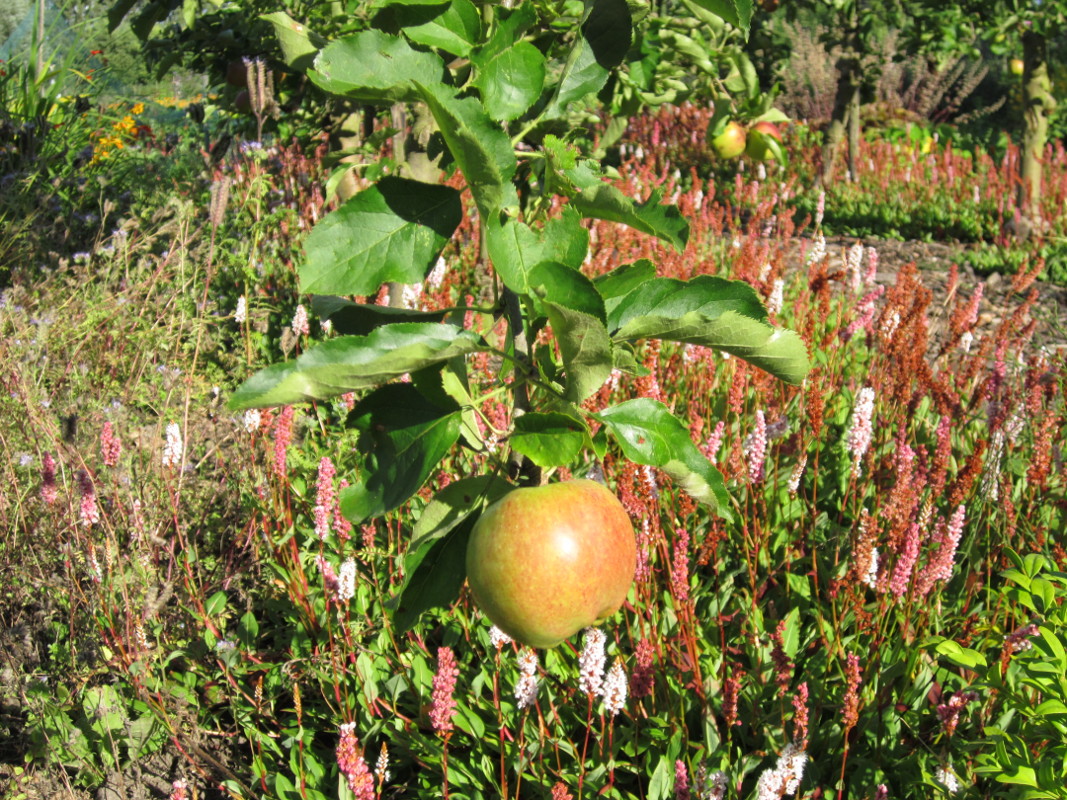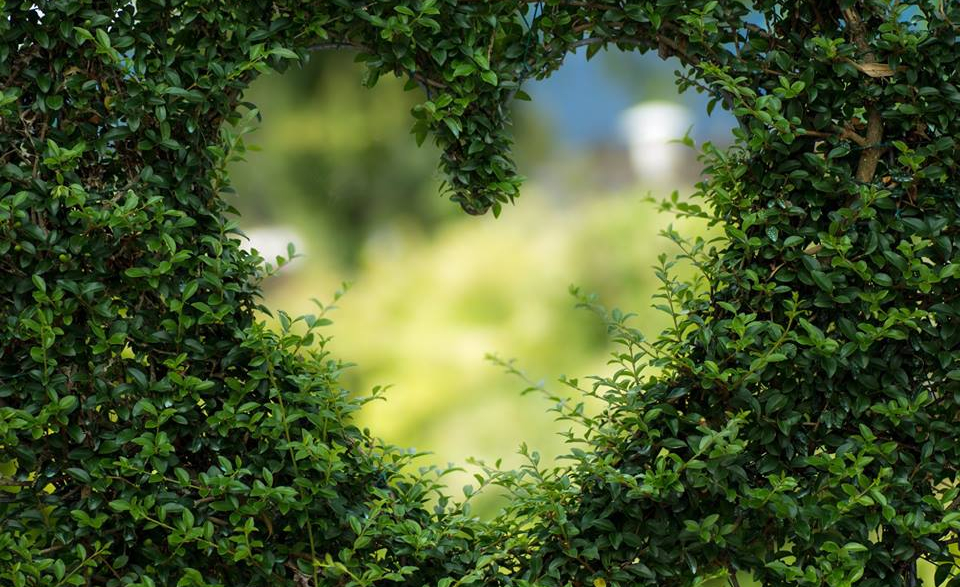
'LIVING' FENCE
LIVING GREEN
The ‘living fence’ is green, formed by trees, shrubs and bushes! This can consist of conifers, deciduous trees and ‘food trees’ such as fruit- and nut trees. The trees can be surrounded by shrubs and bushes, so that the fence becomes denser! The fence can also be built in layers in this way.
In addition, the tallest trees form the back wall, and the smaller trees such as fruit trees and shrubs in front on the sunny side. Conifers however, shouldn’t be planted with other tree species. They grow best as solitary trees or as a homogenous group planted together, and as such, create a beautiful outlook.
If stone walls or wooden fences have already been placed on the estate, they can be grown with climbing plants such as clematis, roses, grape vines and the evergreen ivy.
.
MORE LAYERS
When building in several layers, it is the best method to plant trees and shrubs zig-zag in front of each other. This way all planting gets enough space and light! When the tallest trees are at the back, the lower trees, shrubs and bushes gradually descend.
For the mutual planting distance, keep in mind the course of the sun, and the height and width of the canopy of the trees. The lower green layers can be filled with suitable perennials, ornamental grasses, and ground cover plants.

FOOD BEARING
Furthermore, the fence can also be used for the cultivation of fruit, nuts and seeds, such as apple, pear, plum, elderberry, cherry, chestnut, walnut, hazelnut, and pine seeds.
Moreover, the fence can also partially border on a fruit orchard. For the lower vegetation there is a wide choice of berry bushes, such as raspberry, blackberry, black currant, gooseberry, currant, mulberry, sea buckthorn, hawthorn, rose hip, honeyberry and blueberry.
.
EVERGREEN
And what happens if you assemble the fence largely from evergreen trees and shrubs? Then in winter you can enjoy the color and scent of a green environment that is oxygen-rich!
It also provides protection against wind and sun, and protects against viewing. Moreover, it forms a habitat for birds and animals in all seasons.
Evergreen conifers are: pine, cedar, thuja, cypress and spruce. Evergreen shrubs include boxwood, juniper, bay leaf and holly.

DECIDUOUS TREES
Others enjoy the sight of deciduous trees in spring, summer and fall, such as birch, oak, beech and maple. Most deciduous trees are deciduous in the fall with beautiful ocher-yellow and red-brown hues, and have bare branches in the winter (6 months). Many deciduous trees and shrubs produce fruits, berries, nuts and seeds, also for the animal kingdom.
ORNAMENTAL SHRUBS
Ornamental shrubs and garland plants with colorful flowers, stand out beautifully against a green background such as magnolia, jasmine, lilac, honeysuckle, broom, forsytsia, and hibiscus. In our climate zone, it is a challenge to ensure a flourishing palette and good harvest for every season!
